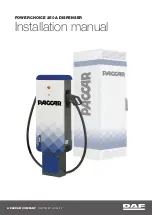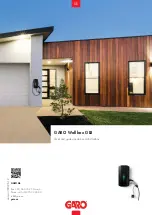
be released. Only in rare cases will the bang
affect your hearing. The powder that is
released generally does not constitute a
health hazard and does not indicate that there
is a fire in the vehicle. The powder may cause
short-term breathing difficulties to persons
suffering from asthma or other pulmonary
conditions. In order to prevent potential
breathing difficulties, you should leave the
vehicle as soon as it is safe to do so. You can
also open the window to allow fresh air to
enter the vehicle interior. The
6
SRS warn-
ing lamp lights up.
If the seat belt is also fitted with a belt force
limiter and this is triggered, the force exerted
by the seat belt on the vehicle occupant is
reduced.
The belt force limiters on the front seats are
synchronised with the front airbags, which
take on a part of the deceleration force. This
results in the load being distributed over a
greater area.
Children in the vehicle
Child restraint systems
Important safety notes
G
WARNING
To reduce the risk of serious or even fatal
injury to the child in the event of a sudden
change in direction, braking or an accident:
R
Children less than 1.50 m tall and under
twelve years of age must always be secured
in special child restraint systems on a suit-
able vehicle seat. This is necessary
because the seat belts are not designed for
children.
R
Do not transport children who are secured
in rearward-facing child restraint systems
on the front-passenger seat. Exception: if
the vehicle is equipped with automatic child
seat recognition on the front-passenger
seat and the child is secured in a child
restraint system with transponders for
automatic child seat recognition
R
If you secure a forward-facing child
restraint system to the front-passenger
seat, you must move the front-passenger
seat as far back as possible. When doing
so, ensure that the shoulder belt strap from
the belt outlet on the vehicle is routed
towards the front to the shoulder belt guide
on the child restraint system. Set the belt
height adjustment so that the belt strap is
routed towards the front along the bottom.
R
Children must never travel sitting on the lap
of another occupant. Due to the forces
which occur in the event of a sudden
change of direction, heavy braking or an
accident, it would not be possible to
restrain the child. The child could be thrown
against parts of the vehicle interior and be
seriously or even fatally injured.
G
WARNING
If the child restraint system is incorrectly fit-
ted on the seat position suitable for this pur-
pose, it cannot perform its intended protec-
tive function. In the event of an accident,
sharp braking or a sudden change in direction,
the child may not be held securely. There is
an increased risk of serious or even fatal inju-
ries.
Observe the manufacturer's installation
instructions and the correct use for the child
restraint system. Make sure that the entire
surface of the child restraint system is resting
on the seat surface. Never place objects
under or behind the child restraint system,
e.g. cushions. Only use child restraint sys-
tems with the original cover designed for
them. Only replace damaged covers with gen-
uine covers.
G
WARNING
If the child restraint system is fitted incor-
rectly or is not secured, it can come loose in
the event of an accident, heavy braking or a
sudden change in direction. The child
Children in the vehicle
55
Safety
Z
Summary of Contents for E 180
Page 1: ...E Class Saloon and Estate Owner s Manual Nur für internen Gebrauch For internal use only ...
Page 4: ......
Page 30: ...28 ...
Page 136: ...134 ...
Page 156: ...154 ...
Page 331: ...Useful information 330 Stowage areas 330 Features 348 329 Stowing and features ...
Page 364: ...362 ...
Page 365: ...Useful information 364 Engine compartment 364 Service 370 Care 371 363 Maintenance and care ...
Page 382: ...380 ...
Page 404: ...402 ...
Page 466: ...464 ...
Page 488: ...486 ...
Page 489: ...487 ...
Page 490: ...488 ...
















































